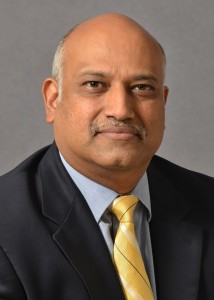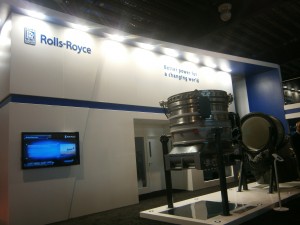
New Delhi. 14 March, 2016. This focus on indigenisation in the aerospace sector will drive the need to build an ecosystem covering the complete lifecycle of products. This is similar to the Indian automotive sector, which showcases the country’s strength in the manufacturing and engineering domain globally by building a thriving ecosystem of automotive OEMs and component suppliers.
However, sustainable indigenisation will work only when we are able to lay equal emphasis on high end capability (people, systems, processes, tools & methods) and access to technology and funds. These are crucial factors which drive quality which in turn assures product safety, which is at the heart of any aerospace product, emphasised Kishore Jayaraman, President, Rolls-Royce India & South Asia, in an exclusive interview with ADU.
ADU. Rolls-Royce has a long legacy in India. How has the journey been and what’s the way ahead?
KJ. Rolls-Royce has a deep relationship in India stretching back more than 80 years and is contributing significantly towards the modernisation of the armed forces. We are proud to have powered the first aircraft of both the Indian Air Force and Indian Navy and are committed to continuing this relationship long into the future. Today, we are deeply embedded in India as an investor, a high skills employer and as a supplier of power systems across all our five businesses: civil aerospace, defence aerospace, marine, civil nuclear and power systems.
Presently, we are working towards the indigenisation of the Indian defence industry by exploring strong partnerships with companies who share our goals. We are already leveraging the vast engineering talent pool and playing a leading role in the government’s ‘Make in India’ initiative. In terms of design, development and supply chain capability, we have announced the recruitment of 500 people in Bengaluru by 2017. These people will undertake aerospace engineering for customers in the region as well as support for Rolls-Royce’s regional supplier base. We have plans to hire around 100 engineers at our upcoming Engineering centre in Pune by this year. In addition, more than 1000 engineers, through our partnership with QuEST & TCS, work at Rolls-Royce managed engineering centres in Bengaluru. In terms of manufacturing, International Aerospace Manufacturing Pvt Ltd (IAMPL) is now at full production employing over 120 people for a wide range of engine programs including the Trent XWB.
Today, we are well positioned to cater to the future growth opportunities available in the India and South Asia region. We will continue to offer India a unique combination of experience and innovation that can help to improve the capability of our customers.

ADU. What is Rolls-Royce’s viewpoint on the ‘Make in India’ initiative? How does Rolls-Royce participate in the initiative?
KJ. India is among the fastest growing economy in the world. It is a key market for Rolls-Royce which has a proven track record of investing in the country’s aerospace capabilities. The idea of Make In India is now more than 18 months old. In the past 18 months, the initiative has become a clarion call for domestic companies and multinationals to increase their investments in the country.
We firmly support the ‘Make in India’ campaign as we believe that it will not only help Indian industries become globally competitive but will also allow companies like us to support the country’s modernisation needs.
We already have world-class manufacturing facility here, exporting components around the world. Employing more than 140 skilled people, IAMPL (a 50:50 JV between Rolls-Royce and Hindustan Aeronautics Ltd (HAL)), currently manufactures more than 100 different parts used across the existing range of Rolls-Royce Civil Engines and includes the Trent family (500, 700, 800, 900, 1000 and the XWB – the world’s most efficient aero engine), RB211 and V2500. The facility is now at full production and will produce 25,000 aerospace parts across a wide range of engine programmes.
A boost to manufacturing sector backed with adequate infrastructure will create millions of new jobs, increase purchasing power and thus create larger markets for overall prosperity.

ADU. How did the year 2015 look for Rolls-Royce in India? How does Rolls-Royce aim to grow further in the country?
KJ. Last year, in view of the growth prospects in India, we expanded our engineering capability in Bangalore. This will enable us to be closer to our customers and allow us to take advantage of new business opportunities, as well as maintaining our competitiveness in the market. We are already leveraging the vast engineering talent pool and playing a leading role in the government’s ‘Make in India’ initiative. In terms of design, development and supply chain capability, this new engineering centre will recruit 500 people by 2017. These people will undertake aerospace engineering for customers in the region as well as support for Rolls-Royce’s regional supplier base. In addition, more than 1300 engineers, through our partnership with QuEST & TCS, work at Rolls-Royce managed engineering centres in Bengaluru. In terms of manufacturing, International Aerospace Manufacturing Pvt Ltd (IAMPL) is now at full production employing over 140 people for a wide range of engine programs including the Trent XWB.
Today, India is one of the most important strategic growth markets for Rolls-Royce and we continue to build on our distinguished legacy and long-standing partnership. We have gradually moved beyond sales and licensed production to engineering services, supply chain and component manufacturing and play a strategically important role in the Group’s global operations.
As we grow our footprint in India, It is our strategic aim to continue to establish a cost-competitive presence in key growth markets, ensuring it has the right people, with the right capabilities and skills to deliver to customers.

ADU. How do you see the development of the Indian Aviation sector?
KJ. India is among the five fastest-growing aviation markets globally with 275 million new passengers travelling and will displace the UK as the third largest in 2026, according to the International Air Transport Association (Iata).
The Union Budget also gives a major push to infrastructure development, with sum of Rs 50-100 crore allocated to revive 160 non-functional airports across the country. Other than this, initiatives such as zero service tax on MRO, services, simplification of import processes for aircraft spares, exemption on customs duty for maintenance tools and tool kit goes a long way in giving a much needed boost to the Indian Aviation sector.

ADU. What will Rolls-Royce be showcasing at the India Aviation Week 2016?
KJ. We believe that India Aviation is a perfect platform for us to showcase our capabilities and also network with our customers, partners etc. We will be showcasing our technologically advanced and innovative Trent 1000 engine. The engine has reached over a million flying hours since entry into service in October 2011 – that’s over 125,000 revenue flights for our customers. Now in service with 10 operators and 1 lessor, the engine continues to demonstrate excellent reliability and robustness despite demanding operational requirements, with an average dispatch reliability of 99.9% since entry into service. The latest variant of the Trent 1000, the TEN (Thrust, Efficiency and New technologies), is in the midst of an exciting engine development programme.
We look forward to bolstering our business opportunities in Indian aviation sector this year at the show.
























































































































